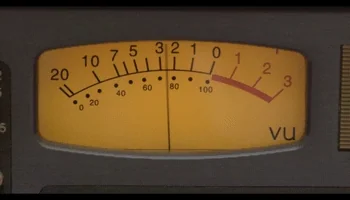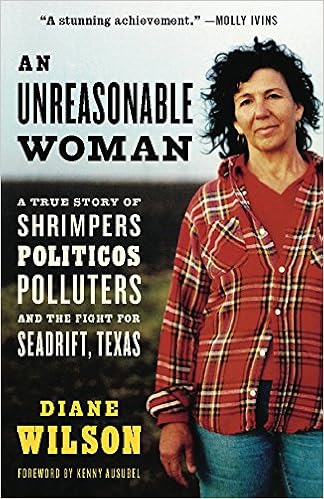To watch this video on YouTube: https://www.youtube.com/watch?v=NAinKHvFzYY&feature=emb_title
Saturday, November 30, 2019
December 7 and 9: open auditions
URI Theatre
sets auditions for ‘Richard III’
 |
| Royal Shakespeare Company photo |
Auditions will be held Saturday,
Dec. 7, and callbacks will be Monday, Dec. 9, with all sessions in G Studio at
the Fine Arts Center, 105 Upper College Road, on the Kingston Campus.
Written around 1593, “Richard III”
is one of Shakespeare’s 10 history plays, chronicling the bloody, Machiavellian
rise and short reign of Richard, Duke of Gloucester.
As the play opens, Richard’s brother
Edward IV is king. Richard manipulates Edward into imprisoning their older
brother Clarence, and then has Clarence killed.
When the ailing King Edward dies, Richard stages events to ascend to the throne, imprisoning both of Edward’s sons and having them killed.
After he is king, Richard disposes of his wife, Lady Anne, to marry his niece Elizabeth of York. But rebellious nobles rally to the banner of Henry Tudor, Earl of Richmond, and threaten Richard’s hold on the crown.
When the ailing King Edward dies, Richard stages events to ascend to the throne, imprisoning both of Edward’s sons and having them killed.
After he is king, Richard disposes of his wife, Lady Anne, to marry his niece Elizabeth of York. But rebellious nobles rally to the banner of Henry Tudor, Earl of Richmond, and threaten Richard’s hold on the crown.
Actors who plan to audition should
read the play and prepare and memorize a one- to two-minute speech in verse
from Shakespeare. Between 10 to 12 actors will be cast to play all the roles in
the play.
Donating your data to science
Would
people be willing to give their personal data for research?
University
of Bristol
 New
research led by the University of Bristol has found that over half of people
would be willing to donate their personal data for research to benefit the
wider general public.
New
research led by the University of Bristol has found that over half of people
would be willing to donate their personal data for research to benefit the
wider general public.
The study
published in PLOS
ONE today [Wednesday 20 November] investigated whether the donation
of personal data could be a publicly acceptable act to support the use of
consumer personal data for academic research.
The researchers
developed a new questionnaire that measured individuals' motivations for
donating data, which could be used in future research on data donation in
different contexts, such as medical data.
The questionnaire explored the intentions and reasons of 1,300 people to donate personal data.
The questionnaire explored the intentions and reasons of 1,300 people to donate personal data.
It CAN happen here
Trump’s
EPA Is Selling Out Safety
 |
| It CAN happen here, as the 2007 fire at Bradford Dyeing plant showed. |
Some lost limbs. Others
suffered horrific burns, head injuries or wounds that left them infertile.
Still others live with the memory of injured co-workers screaming in agony or
dying under heaps of rubble.
Since then, dozens of
other incidents have killed workers and endangered residents near petrochemical
plants. But tragedies like these don’t have to happen.
/https://static.texastribune.org/media/files/d72f6d117a7b065bb53da1fc3c9ba7f5/Port%20Neches%20Explosion%20REUTERS%20TT%2001.JPG) |
| ...And it IS happening here in Port Neches, Texas |
In January 2017, the EPA issued the Chemical Disaster Rule, which provided sweeping new safeguards for workers, first responders and communities where dangerous plants are located. It would have forced operators to address unsafe practices and keep their equipment up to date.
However, Donald Trump
became president before the new requirements took effect. Corporations that own
chemical and petrochemical plants complained about the requirements, and
shortly after Trump took office, his business-friendly EPA abruptly decided to
sit on them.
Now, after delaying implementation
of the Chemical Disaster Rule for two years, Trump’s EPA just killed
most of it.
Brown joins fight against Trump anti-immigrant jihad
Brown
joins legal brief to urge continued practical training for international
students
Brown University
 |
| Tulane University graphic |
On Monday, Nov. 25, Brown University joined more than 110 colleges and universities across the nation in filing a legal brief urging a federal court to preserve the ability for international students to complete practical training in the U.S. as a complement to their classroom studies.
Filed
in a U.S. District Court case titled Washington Alliance of Technology
Workers Union v. U.S. Department of Homeland Security, the amicus brief argues
in support of the continued existence of the Optional Practical Training (OPT)
program, which enables graduate and undergraduate students with F-1 visa status
to obtain temporary employment during or after graduation to gain practical
training related to their field of study.
“[OPT]
is a longstanding government program that permits international students to
continue, and deepen, their education by applying the skills and knowledge they
learn in the classroom to a professional setting,” the brief argues.
“OPT provides untold benefits for these international students. But, just as critical, being able to provide international students with the opportunities facilitated by OPT gives American institutions of higher education an edge in an increasingly competitive global education market.”
“OPT provides untold benefits for these international students. But, just as critical, being able to provide international students with the opportunities facilitated by OPT gives American institutions of higher education an edge in an increasingly competitive global education market.”
Friday, November 29, 2019
Donald Trump and His Insane Clown Posse
The GOP thinks its
Ukraine fantasies are one more rung up the fool's gold ladder of chaos.
 Chaos is a pit, the
all-knowing eunuch Lord Varys warns in Game of Thrones, “a gaping
pit waiting to swallow us all.”
Chaos is a pit, the
all-knowing eunuch Lord Varys warns in Game of Thrones, “a gaping
pit waiting to swallow us all.”
The conniving Peter
Baelish, known as Littlefinger, disagrees: “Chaos isn't a pit,” he replies. Too
few realize, he says, that, “Chaos is a ladder… Only the ladder is real. The
climb is all there is.”
What does this tell
us, other than the fact that earlier this year I binge-watched Game of
Thrones?
Well, reflect on
Littlefinger’s cynical opportunism and see how the GOP has degenerated into a
party of Littlefingers, lying and scheming for no other reason than to keep
climbing the ladder for the power, stature and money they believe it signifies.
Rung after rung, the
Rudy Giulianis, the Lindsay Grahams and Jim Jordans and Devin Nunes try to
rise, blindly willing and in obeisant lockstep behind a maniac, not realizing
that at the top there is nothing but a long fall down to their own moral
destruction.
Look upon his works
and despair. On Friday morning, there was Donald Trump on Fox &
Friends, after days of evidence before the House intelligence committee
confirming his use of office for personal political gain.
This second week of
damning testimony, especially from Lt. Colonel Alexander Vindman, EU Ambassador
Gordon Sondland, diplomat David Holmes and former National Security Council
staffer Fiona Hill, moved him steadily along the road to impeachment.
So of course, he went
on Fox to howl at the white and lifeless moon (also known as Steve Doocy and
pals) about the lies, conspiracies and calumnies aimed at bringing a great
president down. And to think, all over a “perfect” phone call to the president
of Ukraine.
As ever, Trump has his
own set of conspiracies and insults to monger and according to Daniel Dale and
Tara Subramaniam at CNN, peddled “at least 18 false claims.”
For nearly an hour’s
ramble, he maligned the usual suspects: Biden, Warren, Pelosi (“crazy as a
bedbug”) and House intelligence committee chair Adam Schiff (“He’s a sick
puppy. He’s so sick.”).
He again impugned the character of former US Ukrainian Ambassador Marie Yovanovich, who so memorably testified against him last week.
On Dec. 5 and 9, URI presents free programs on how to save energy and money
URI
Cooperative Extension to host energy lecture series, Dec. 5, 9
 Real-time energy management and energy equity are the themes of the annual
“Plugged Into Energy Research” lecture series sponsored by the University of
Rhode Island Cooperative Extension and the Rhode Island Energy Efficiency and
Resource Management Council.
Real-time energy management and energy equity are the themes of the annual
“Plugged Into Energy Research” lecture series sponsored by the University of
Rhode Island Cooperative Extension and the Rhode Island Energy Efficiency and
Resource Management Council.
The lectures will be held Thursday,
Dec. 5, and Monday, Dec. 9, from 7 to 9 p.m. at the URI Welcome Center, 45
Upper College Road., Kingston.
Each of the lectures will feature
three 40-minute presentations by local energy experts from academia, the
business community and state government.
Do they have GPS?
Birds
of a feather flock together, but how do they decide where to go?
American
Institute of Physics
 Coordinated
behavior is common in a variety of biological systems, such as insect swarms,
fish schools and bacterial colonies.
Coordinated
behavior is common in a variety of biological systems, such as insect swarms,
fish schools and bacterial colonies. But the way information is spread and decisions are made in such systems is difficult to understand.
A
group of researchers from Southeast University and China University of Mining
and Technology studied the synchronized flight of pigeon flocks. They used this
as a basis to explain the mechanisms behind coordinated behavior, in the
journal Chaos, from AIP Publishing.
Trump rolled out defective Medicare comparison tool
$11 million dollar Medicare tool gives seniors the WRONG insurance information
The federal government recently redesigned a digital tool that helps seniors navigate complicated Medicare choices, but consumer advocates say it’s malfunctioning with alarming frequency, offering inaccurate cost estimates and creating chaos in some states during the open enrollment period.
Diane Omdahl, a Medicare consultant in Wisconsin, said she used the tool Friday to research three prescription drug plans for a client. The comparison page, which summarizes total costs, showed all but one of her client’s medications would be covered.
When Omdahl clicked on “plan details” to find out which medicine was left out, the plan finder then said all of them were covered.
So she started checking the plans’ websites, and it turns out there are two versions of the same high blood pressure medication. One is covered. The other is not. The difference in price: $2,700 a month.
In Nebraska, miscalculations offered through the new Medicare Plan Finder were so worrisome that the state in late October temporarily shut down a network of about 350 volunteer Medicare advisers for a day because without the tool, narrowing the numerous choices — more than 4,000 Medicare plans are available nationwide — down to three top selections would be nearly impossible.
Days later, EnvisionRxPlus, a prescription drug plan, sent an email to independent insurance brokers nationwide recommending they not use the Medicare Plan Finder because of incorrect estimates on drug prices and patient deductibles. (It’s a warning they had yet to retract some two weeks later.)
 |
| ProPublica image |
Diane Omdahl, a Medicare consultant in Wisconsin, said she used the tool Friday to research three prescription drug plans for a client. The comparison page, which summarizes total costs, showed all but one of her client’s medications would be covered.
When Omdahl clicked on “plan details” to find out which medicine was left out, the plan finder then said all of them were covered.
So she started checking the plans’ websites, and it turns out there are two versions of the same high blood pressure medication. One is covered. The other is not. The difference in price: $2,700 a month.
In Nebraska, miscalculations offered through the new Medicare Plan Finder were so worrisome that the state in late October temporarily shut down a network of about 350 volunteer Medicare advisers for a day because without the tool, narrowing the numerous choices — more than 4,000 Medicare plans are available nationwide — down to three top selections would be nearly impossible.
Days later, EnvisionRxPlus, a prescription drug plan, sent an email to independent insurance brokers nationwide recommending they not use the Medicare Plan Finder because of incorrect estimates on drug prices and patient deductibles. (It’s a warning they had yet to retract some two weeks later.)
Thursday, November 28, 2019
Winning by losing
New rule
seeks to prevent companies from profiting off ratepayers without producing
electricity
By Steve
Ahlquist in UpRiseRI
 ISO New
England is the independent non-profit
responsible for running the energy grid in New England and for securing “reliable, competitively priced”
electricity.
ISO New
England is the independent non-profit
responsible for running the energy grid in New England and for securing “reliable, competitively priced”
electricity. To do this, ISO New England holds annual auctions to secure energy three years in the future. Power plant operators bid into the system, agreeing to deliver a certain amount of energy for a certain price when required, three years hence.
This system worked well for about a
decade, until Invenergy came
to Rhode Island with
the intention of building a $1B fracked gas and diesel oil burning power plant
amidst the pristine forests of Burrillville.
Invenergy didn’t have a power plant, but they planned to have one three years in the future, so Invenergy entered into a Forward Capacity Auction (FCA) and secured what is called a Capacity Supply Obligation (CSO), essentially a promise to deliver energy for money in the future.
Invenergy didn’t have a power plant, but they planned to have one three years in the future, so Invenergy entered into a Forward Capacity Auction (FCA) and secured what is called a Capacity Supply Obligation (CSO), essentially a promise to deliver energy for money in the future.
More technically, what Invenergy did
was enter FCA-10, held in
February 2016, and was awarded a CSO of 485 MW on Turbine One. (Invenergy’s
proposed power plant was to feature two turbines; only one sold into the
auction.) The energy Invenergy agreed to provide to ISO New England was to be
supplied between June 1, 2019 and May 31, 2020.
We now know that it would have been
impossible for Invenergy to meet their obligation to deliver the electricity,
since the proposed power plant will never be built. And in fact, given that it
takes years to approve and build a power plant, it was clear very early on that
Invenergy was going to be unable to meet their 2019 obligation to deliver
power. But this is no big deal.
Key question for future energy policy
How
much energy do we really need?
International
Institute for Applied Systems Analysis
 Two
fundamental goals of humanity are to eradicate poverty and reduce climate
change, and it is critical that the world knows whether achieving these goals
will involve trade-offs.
Two
fundamental goals of humanity are to eradicate poverty and reduce climate
change, and it is critical that the world knows whether achieving these goals
will involve trade-offs. New IIASA research for the first time provides a basis to answer this question, including the tools needed to relate basic needs directly to resource use.
Researchers
have been grappling with the question of how much energy societies actually
need to satisfy everyone's most basic needs for many years, but as global
scenarios of climate stabilization assume strong reductions in energy demand
growth in the face of the climate crisis -- especially in developing countries
-- finding an answer is becoming crucial.
In their study published in the journal Nature Energy, IIASA researchers attempted to find out whether meeting everyone's most basic human needs is in fact an impediment for stabilizing climate change.
In their study published in the journal Nature Energy, IIASA researchers attempted to find out whether meeting everyone's most basic human needs is in fact an impediment for stabilizing climate change.
Rhode Islanders miss 11 million meals
|
||||||||||||||||||
|
||||||||||||||||||
|
What’s old is new again
How an Old Law Is Helping Fight New Plastic Problems
 On October 15 a
federal court approved the largest citizen-suit settlement ever awarded under
the Clean Water Act: $50 million.
On October 15 a
federal court approved the largest citizen-suit settlement ever awarded under
the Clean Water Act: $50 million.
A fourth-generation
Texas shrimper, Diane Wilson, used the citizen suit provision of the Clean
Water Act to sue the petrochemical manufacturer Formosa Plastic for violating
the Clean Water Act. Formosa was discharging plastic pellets into Lavaca Bay, a
water body located off the Gulf of Mexico halfway between Houston and Corpus
Christi.
In the recent fight
against plastic pollution, advocates and lawmakers have focused their attention
on enacting new laws like plastic bans.
But Wilson’s victory is a reminder that enforcement of existing laws is still a valuable tool in battling plastic pollution — and citizen suits can be leveraged to hold industry accountable.
But Wilson’s victory is a reminder that enforcement of existing laws is still a valuable tool in battling plastic pollution — and citizen suits can be leveraged to hold industry accountable.
To understand how this
works, let’s go back almost 50 years.
The Clean Water Act
was a part of the “burst” of federal environmental legislation enacted in the 1970s in response to
perceived inadequacies in common law.
Like its contemporary environmental statutes of the 1970s, the Clean Water Act contains a citizen suit provision allowing private citizens to sue facilities suspected of violating the law.
But unlike its contemporaries, a violation of this particular law is relatively easy to prove. If a facility discharges a pollutant into water without a permit, a violation has occurred.
EDITOR'S NOTE: Diana was a leading environmental activist back in the 1980s when I served as national organization director for the group now known as the Center for Health and Environmental Justice. She was an inspiration then and still is. -Will Collette
Like its contemporary environmental statutes of the 1970s, the Clean Water Act contains a citizen suit provision allowing private citizens to sue facilities suspected of violating the law.
But unlike its contemporaries, a violation of this particular law is relatively easy to prove. If a facility discharges a pollutant into water without a permit, a violation has occurred.
EDITOR'S NOTE: Diana was a leading environmental activist back in the 1980s when I served as national organization director for the group now known as the Center for Health and Environmental Justice. She was an inspiration then and still is. -Will Collette
Wednesday, November 27, 2019
MUSIC VIDEO: He's Just a GURL Who'll QUID PRO QUO!
To watch this video on YouTube: https://www.youtube.com/watch?v=3mWTDI4aQZY
NOT a joke: Trump actually tweeted this out this morning
Will
someone PLEASE read the 25th Amendment
 U.S.
P*esident Donald Trump on Wednesday (November 27) morning took to social media
and tweeted an objectively ridiculous picture with his head super-imposed on
the muscled body of fictional boxing champion Rocky Balboa.
U.S.
P*esident Donald Trump on Wednesday (November 27) morning took to social media
and tweeted an objectively ridiculous picture with his head super-imposed on
the muscled body of fictional boxing champion Rocky Balboa.
Here
it is. Here is what the person with the codes to the U.S. nuclear arsenal
tweeted (continue, below):
Beware of idiots in the woods
Wear solid, daylight fluorescent orange if you go walking in Burlingame or other
state management areas
Shotgun
Deer Hunting Season Opens December 7
The
Rhode Island Department of Environmental Management (DEM) reminds all Rhode
Islanders that, for safety reasons, they must wear solid, daylight fluorescent
orange when in State management areas and undeveloped State parks during the
shotgun deer hunting season, which opens on Saturday, Dec. 7.
All
hunters, including archers, are required to wear 500 square inches of solid,
daylight fluorescent orange clothing during the shotgun season.
Waterfowl hunters hunting from a boat or blind, over water or field, and when done in conjunction with decoys are exempt from the orange requirements.
Archers are exempt from wearing orange in areas of the state that are limited to hunting by archery-only.
Waterfowl hunters hunting from a boat or blind, over water or field, and when done in conjunction with decoys are exempt from the orange requirements.
Archers are exempt from wearing orange in areas of the state that are limited to hunting by archery-only.
Throughout
all shotgun deer seasons, all other users of State management areas and
designated undeveloped State parks also must wear at least 500 square inches of
solid, daylight fluorescent orange material.
For all hunters and management area users, the orange clothing should include a hat and vest worn above the waist and visible in all directions. An orange vest that's 20 inches long by 25 inches wide has 500 square inches of surface area.
For all hunters and management area users, the orange clothing should include a hat and vest worn above the waist and visible in all directions. An orange vest that's 20 inches long by 25 inches wide has 500 square inches of surface area.
When is the right time to vaccinate?
Assessing
different HPV vaccines and vaccine schedules in adolescent girls and boys
Wiley
 New
evidence published in the Cochrane Library today provides further information
on the benefits and harms of different human papillomavirus (HPV) vaccines and
vaccine schedules in young women and men.
New
evidence published in the Cochrane Library today provides further information
on the benefits and harms of different human papillomavirus (HPV) vaccines and
vaccine schedules in young women and men.
HPV
is the most common viral infection of the reproductive tract in both women and
men globally (WHO 2017). Most people who have sexual contact will be exposed to
HPV at some point in their life. In most people, their own immune system will
clear the HPV infection.
HPV
infection can sometimes persist if the immune system does not clear the virus.
Persistent infection with some 'high-risk' strains of HPV can lead to the
development of cancer.
High-risk HPV strains cause almost all cancers of the cervix and anus, and some cancers of the vagina, vulva, anus, penis, and head and neck.
Other 'low risk', HPV strains cause genital warts but do not cause cancer.
Development of cancer due to HPV happens gradually, over many years, through a number of pre-cancer stages, called intra-epithelial neoplasia.
High-risk HPV strains cause almost all cancers of the cervix and anus, and some cancers of the vagina, vulva, anus, penis, and head and neck.
Other 'low risk', HPV strains cause genital warts but do not cause cancer.
Development of cancer due to HPV happens gradually, over many years, through a number of pre-cancer stages, called intra-epithelial neoplasia.













